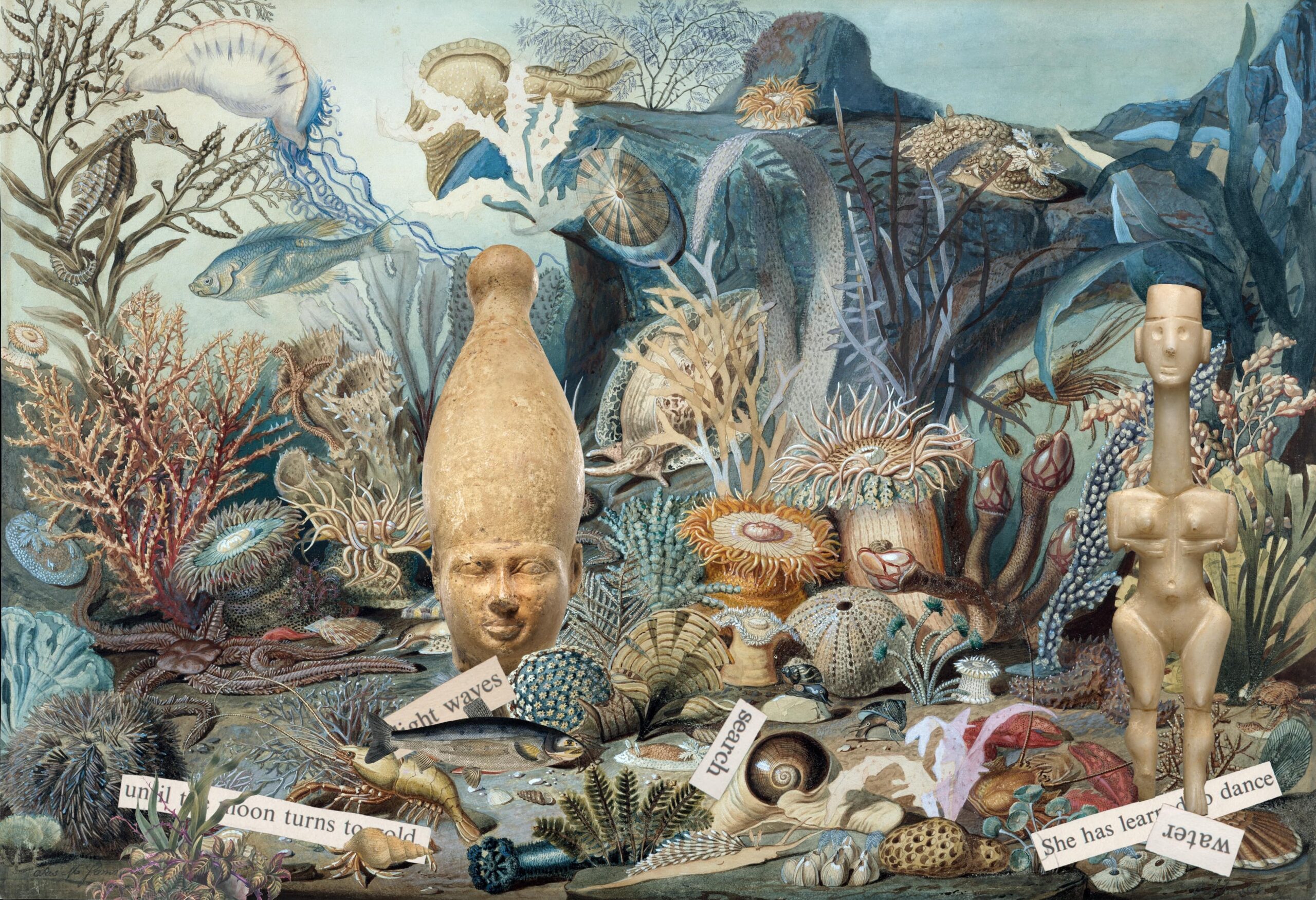
Art: "She Has Learned to Dance" by Dominique Elliott
Nonfiction: "WANNA CUTTLE" by Amanda Boyanowski-Morin
Did you know cuttlefish are aquatic invertebrates covered in chromatophores, color-changing skin cells, much like pixels, that can both camouflage and communicate with other cuttlefish?
There are thousands of these specialized cells per millimeter of skin. The cuttlefish is a master of its environment.
/
Not long after coming out to my friends as queer and opening my marriage to accommodate the potential of expressing this with a partner, I regularly found myself alone at the New England Aquarium. I had this canvas tote, with two cuttlefish in a mating dance, and it said ‘Wanna Cuttle?’
I was certain someday someone would talk to me, connect with me, weather the storm of the crowd for a few moments, enrapture at the electric eel exhibit, share a moment over the gentle propulsion of the jellyfish… Though I just stood, silently, knitting, entranced by the aquarium and its inhabitants.
I would open Tinder, hoping to match with a person .01 miles away dying to understand cephalopods, their obscene intelligence, their utter strangeness. I would wrap one stitch on the needles, then another, making patterns in this timid darkness, drowning in a tank of factoids.
/
Years later I learned of autistic masking, the practice of making oneself closer to the expected norm. A form of human camouflage I was unaware I was perpetually shrouding myself in. Unmasking is rolling back the waves of socially constructed expectations of behaviour and realigning with intense special interest, ticks, stims, and perseverations becoming reacquainted with oneself as a whole person.
I wonder if I knew about unmasking sooner I could have perhaps
stood next to someone and just said
‘Did you know that octopuses have been known to use coconut shells as armour?’
or
‘See that Sea Dragon? They have no known predators.’
‘Frogfish have the ability to walk on rocks with their pectoral fins.’
‘I am awed that the loudest sound made by an animal is the windy call of the blue whale -188 decibels.’
‘Peacock Mantis shrimp have a punch strong enough to break aquarium glass.’
or
‘The Thornback Cowfish becomes toxic in stressful environments.’
Or even, quietly,
‘I come here sometimes just to feel.
To be reminded of this astonishing world,
to connect with my non-human brethren…’
and as I trailed off my chromatophores would pulse
aqua, fuchsia, plaid, sincerity, tidal susurrations, cerulean,
twinkling light white, dragonfly wing iridescent,
feathery down, first frost, unbleached coral…
I would wait.
See if they understood what I really meant to say.
Published February 17th 2023
Amanda Boyanowski-Morin is a writer, homeschooler and voracious reader. She is most frequently found on the bike path by her house knitting while wandering with her service dogs in search of cool plants.
Born in Brussels Belgium, Dominique Elliott is a multimedia artist and professor. Her work begins in reverse: with a title. Her interest in the interplays of words and image, in transpositions, translations, phenomenology, epistolary works, reverse ekphrastic practice, has crept into her artistic practice through documentaries, painting, and mixed media.